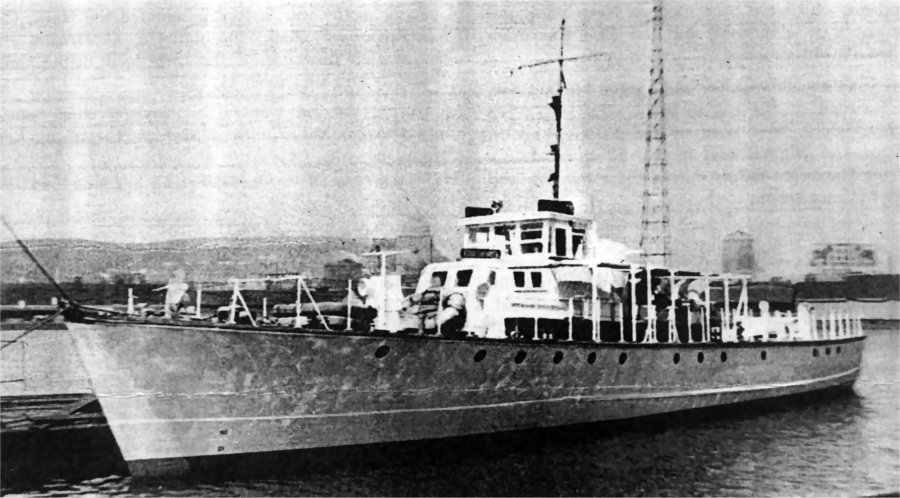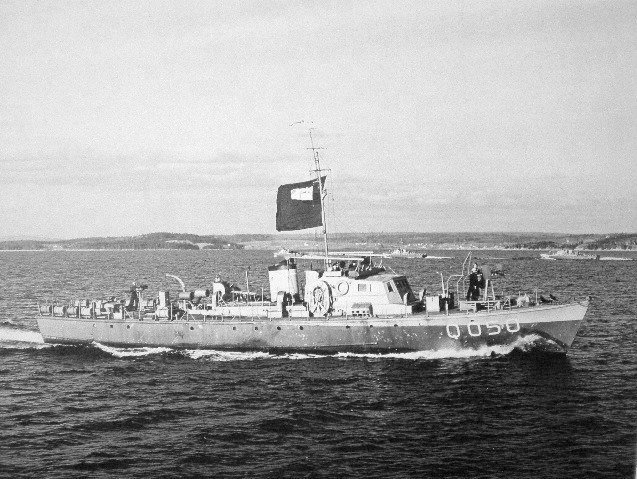Auke Visser's Other Esso Related Tankers Site | home
Esso Taparita - (1946- ?? )

"Esso Taparíía" one of four former sub chasers, now operating for Creole at Lake Maracaíbo.
The "Esso Taparíía" was the former HMC ''ML Q081''.
With a fuel capacity of 2,320 gallons of 87 octane gasoline, the early Fairmiles (Q050 to Q111) were powered by two 650 hp engines,
could reach a top speed of 20 knots (max), 16.5 knots sea speed and a range of 1925 miles at 7.5 knots.
"Convoy of Two"
On July 20, 1946, Captain Milton Breece and Captain Skolem left New York for Lake Maracaibo in command, respectively, of the Esso Concordía and the Esso Ayacucho. Their assignments were to deliver these former Canadian Navy sub chasers to the Creole Petroleum Corporation at La Salina on the Lake. As Captain Einar Skolem put it, “We were a convoy of two."
The small craft, which look like a cross between a yacht and a Navy PT boat, had previously been brought to New York from a Canadian port on Lake Ontario, via the Gulf of St. Lawrence, Halifax, the Cape Cod Canal, and Long Island Sound.
Creole purchased four in all-the other two are the Esso Cardonal and the Esso Taparita-and intends to use them to supplement a fleet of small launches already in use for carrying work crews from the camps around the Lake to the oil derricks which dot the surface of perhaps the most unusual oil producíng area in the world. The Esso Concordia and the Esso Ayacucho, like the other two, were named hy Creole for workmen's camps on the Lake.
Each vessel carried a. crew of six leaving New York master, chief mate, chief engineer, first assistant engineer, deck hand and cook. With the exception of the master and the chief engineer, the crews were Scandinavian. Acting chief engineers for the trip were Rudolph Maertner on the Concordía and John Thompson on the Ayacucho. Both are associated with Butterworth and are Navy veterans of the war.
Here's how Captain Skolem described his unusual command: “The Exso Ayacucho has beautiful teakwood decks. She's a 112 foot twin-serew ship with a 5 foot draft, a 17 foot beam and two 650 horsepower Hall-Scott Defender motors, capable of developing a speed of 18 to 19 knots. While the craft were still tied up in Canada, the Company built on glass enclosed. higher
additions to the original low wheelhouses to provide more room and better visibility. Atop the enlarged wheelhouse is a searchlight and behind it a mast. Farther aft is the engine casing, covered by an awning, and a small cabin. A Panish automatic engine control
had also been installed on the bridge.
Text from : The Ships Bulletin, Jan-Feb 1947.
|

HMC ''ML Q050'' was the first of a series of wooden Canadian-built Fairmile B motor launch (ML) boats
delivered to the Royal Canadian Navy (RCN) on 18 November 1941
The Royal Canadian Navy owned several of the early Fairmiles (Q050 to Q111).